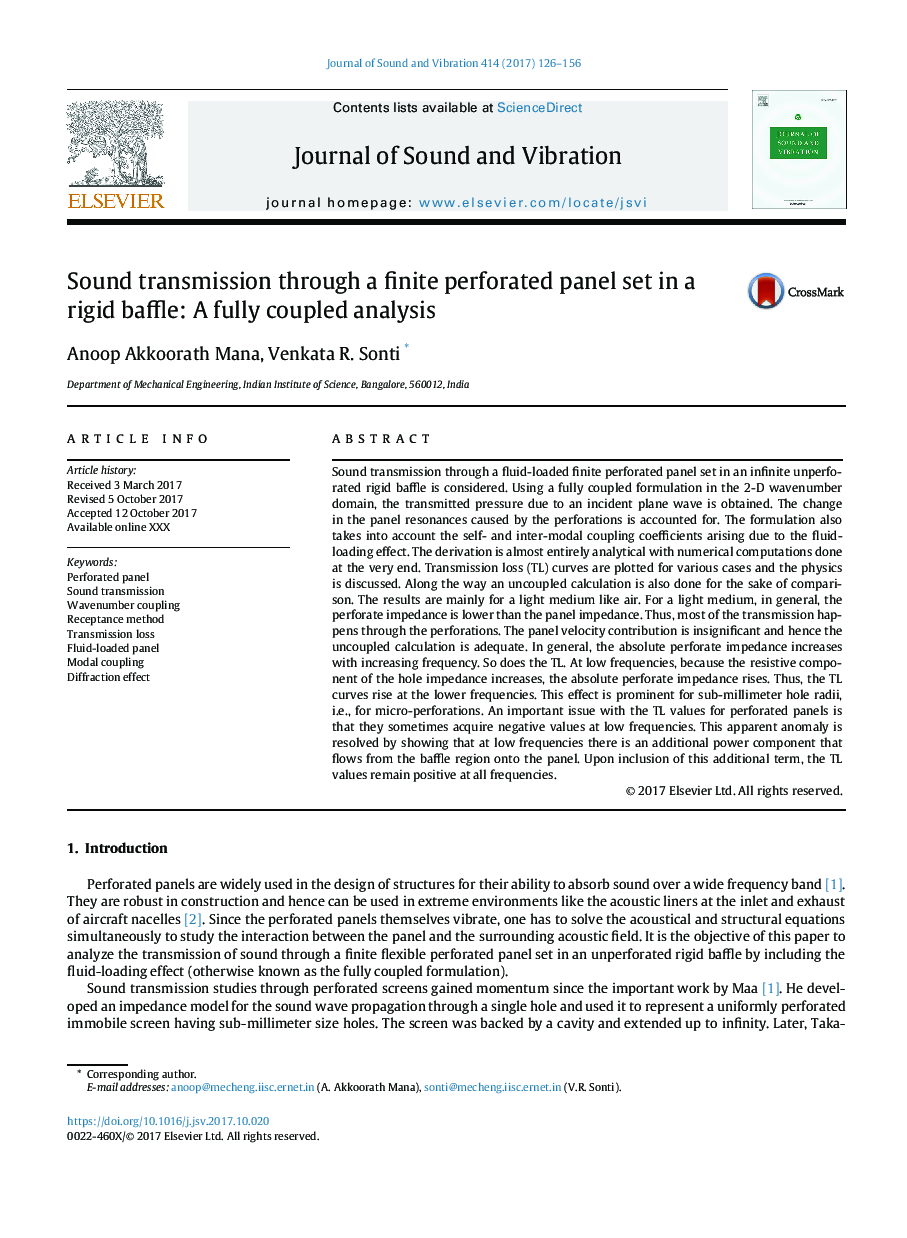| Article ID | Journal | Published Year | Pages | File Type |
|---|---|---|---|---|
| 6754127 | Journal of Sound and Vibration | 2018 | 31 Pages |
Abstract
Sound transmission through a fluid-loaded finite perforated panel set in an infinite unperforated rigid baffle is considered. Using a fully coupled formulation in the 2-D wavenumber domain, the transmitted pressure due to an incident plane wave is obtained. The change in the panel resonances caused by the perforations is accounted for. The formulation also takes into account the self- and inter-modal coupling coefficients arising due to the fluid-loading effect. The derivation is almost entirely analytical with numerical computations done at the very end. Transmission loss (TL) curves are plotted for various cases and the physics is discussed. Along the way an uncoupled calculation is also done for the sake of comparison. The results are mainly for a light medium like air. For a light medium, in general, the perforate impedance is lower than the panel impedance. Thus, most of the transmission happens through the perforations. The panel velocity contribution is insignificant and hence the uncoupled calculation is adequate. In general, the absolute perforate impedance increases with increasing frequency. So does the TL. At low frequencies, because the resistive component of the hole impedance increases, the absolute perforate impedance rises. Thus, the TL curves rise at the lower frequencies. This effect is prominent for sub-millimeter hole radii, i.e., for micro-perforations. An important issue with the TL values for perforated panels is that they sometimes acquire negative values at low frequencies. This apparent anomaly is resolved by showing that at low frequencies there is an additional power component that flows from the baffle region onto the panel. Upon inclusion of this additional term, the TL values remain positive at all frequencies.
Related Topics
Physical Sciences and Engineering
Engineering
Civil and Structural Engineering
Authors
Anoop Akkoorath Mana, Venkata R. Sonti,
